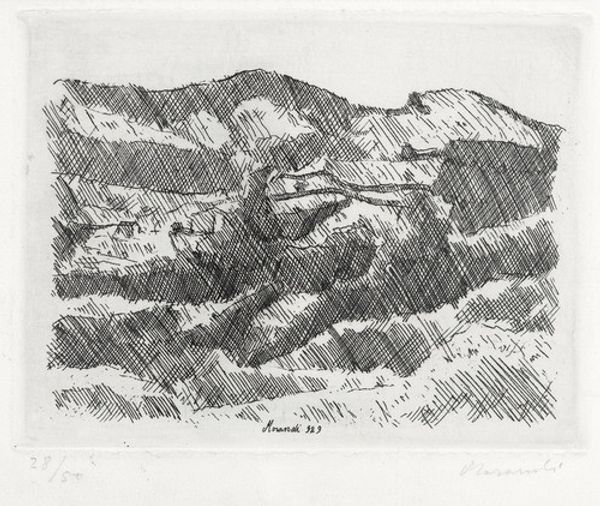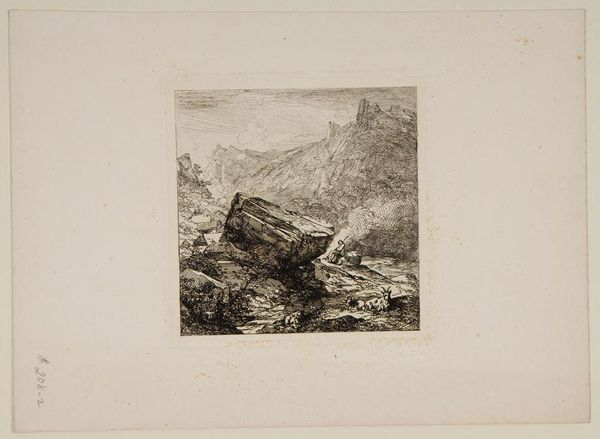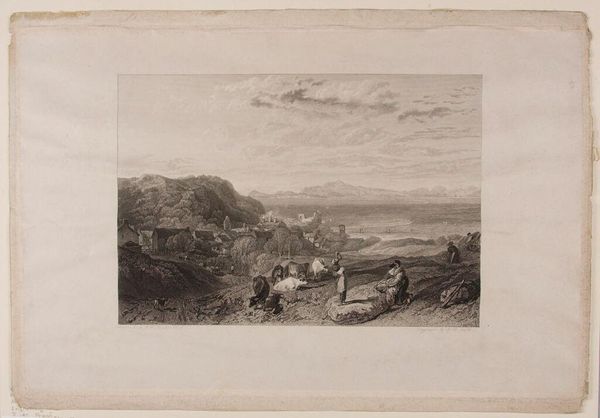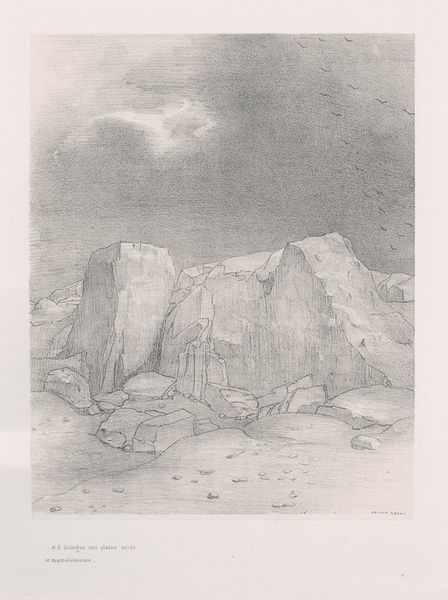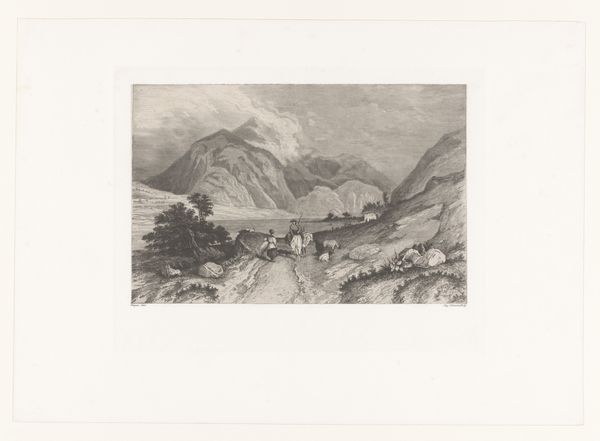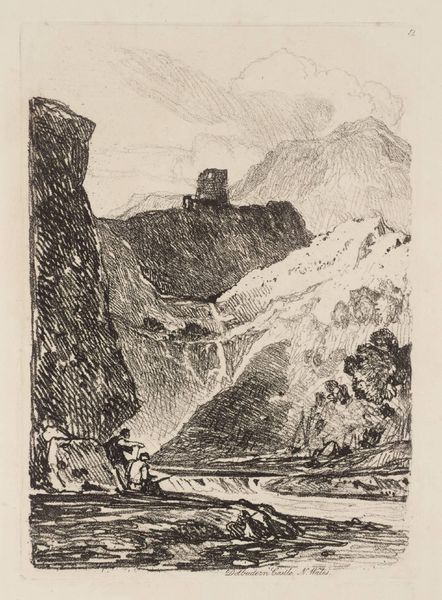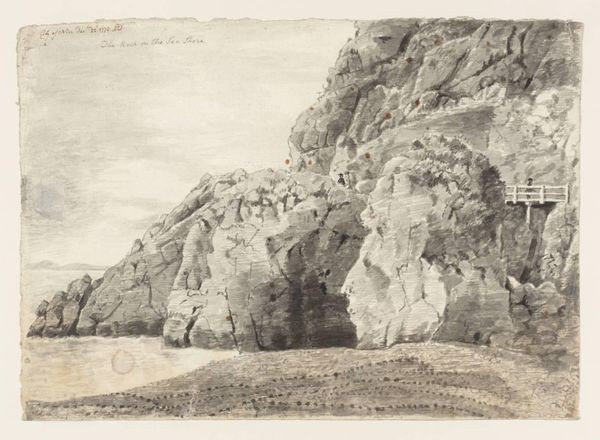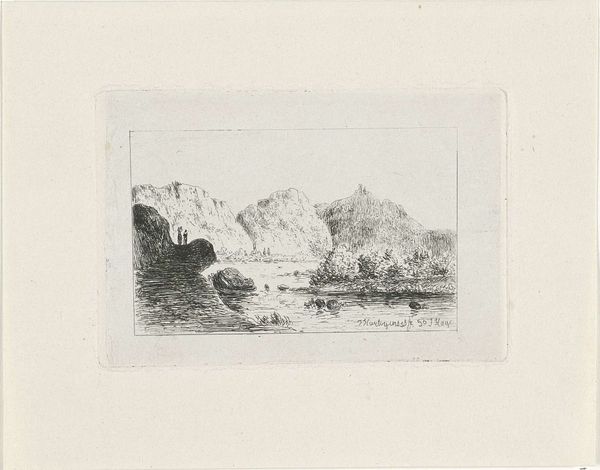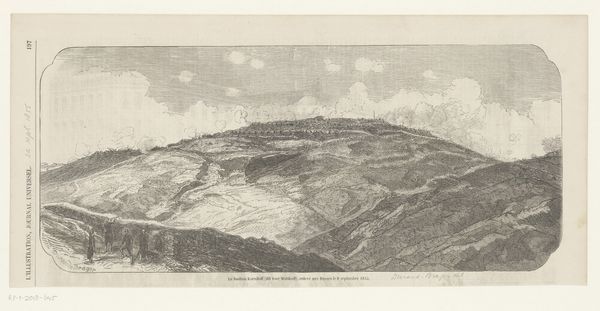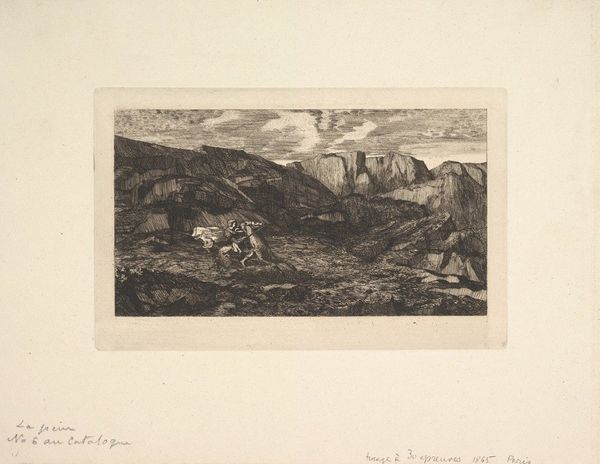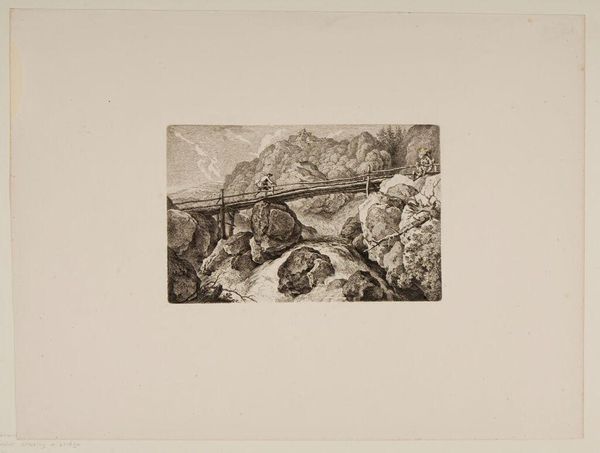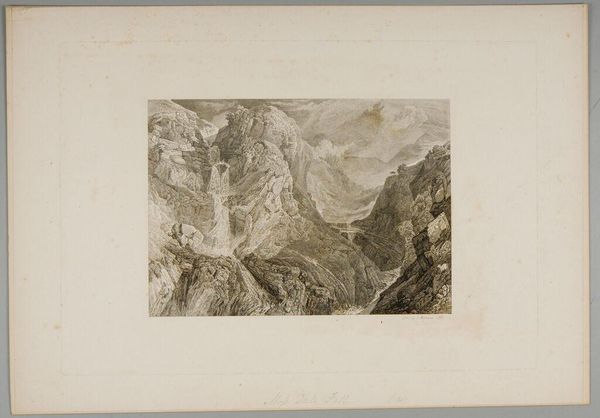
engraving
#
landscape
#
waterfall
#
romanticism
#
pencil work
#
engraving
Dimensions: height 134 mm, width 195 mm
Copyright: Rijks Museum: Open Domain
Editor: So, here we have Hendrik Roosing’s "View of the Vaucluse Fountain," created sometime between 1786 and 1826, an engraving on paper, housed in the Rijksmuseum. It strikes me as quite dramatic, almost theatrical, with these towering rock formations and a delicate waterfall. What captures your attention in this piece? Curator: It's the depiction of nature through the lens of Romanticism that intrigues me. Consider the socio-political context. As industrialization accelerated, artists like Roosing turned to nature, presenting it not merely as a landscape, but as a spectacle infused with emotional and spiritual resonance. Note how the tiny figures emphasize the overwhelming power of nature. How does that make you think about the societal role of landscapes at this time? Editor: That’s interesting – the people almost look like an afterthought compared to the immensity of the cliffs and waterfall. They highlight, perhaps, the vulnerability of humans, but also a sort of picturesque sensibility of humans appreciating nature. Curator: Precisely. Now, think about the institutional context. The rise of museums and public exhibitions influenced artistic production. An engraving like this would have allowed a wider audience to access and contemplate sublime natural scenery that they might never experience firsthand. What kind of patron would purchase this and where would it be hung? Editor: It feels almost like a form of tourism – taking a memento from these epic scenes that served almost as places of pilgrimage. Hanging this on your wall may elevate one’s status. Curator: Exactly! It becomes a symbol, a cultural artifact. What I’m getting at, and this is really fascinating, is that "nature" in art is never just nature. It’s always mediated through culture, power structures, and systems of representation. That engraving transforms into something greater. Editor: I never thought of it that way! It completely changes how I see landscape art; there’s so much more at play here. Curator: Indeed. It is crucial to contextualize its visual representation within broader societal forces, shaping both its creation and appreciation.
Comments
No comments
Be the first to comment and join the conversation on the ultimate creative platform.

